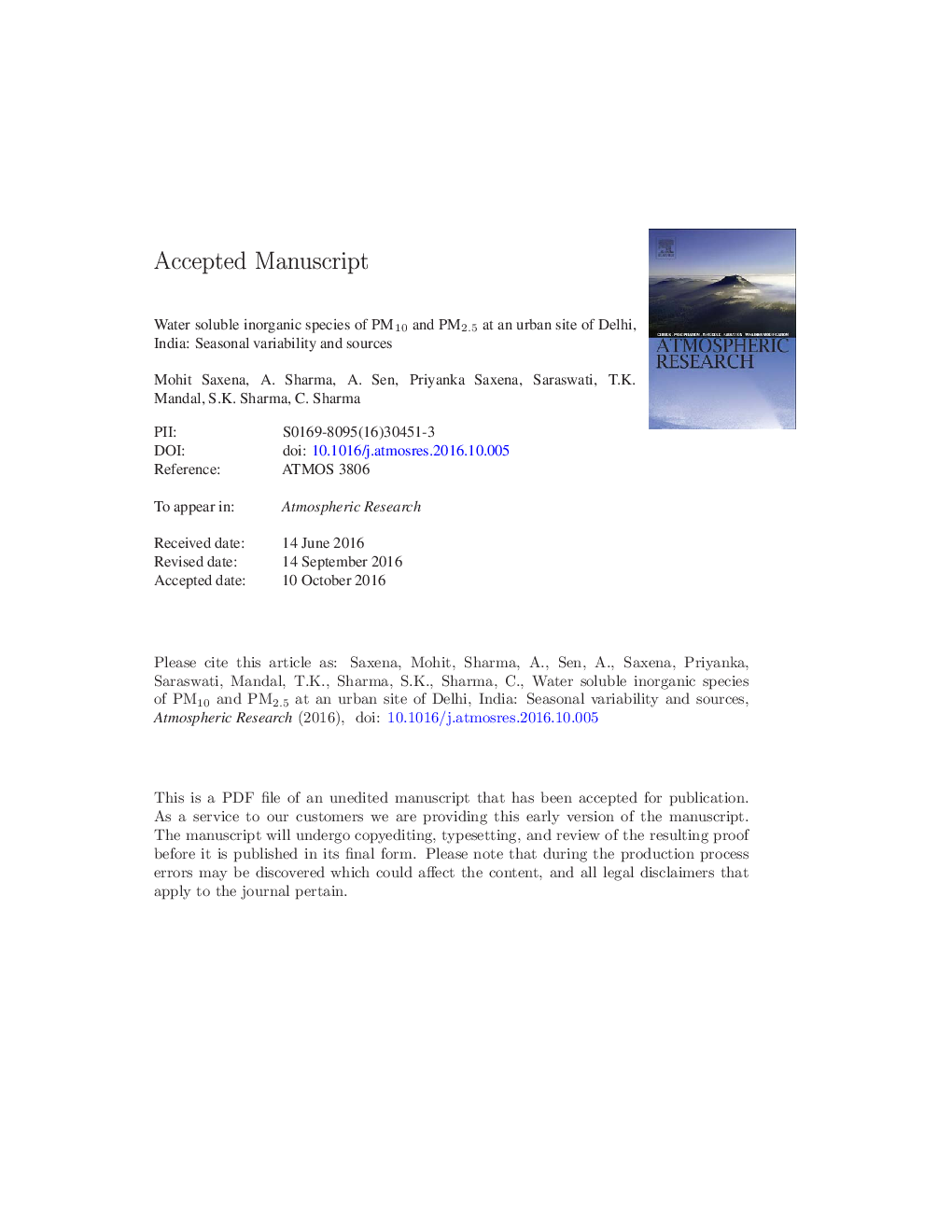| کد مقاله | کد نشریه | سال انتشار | مقاله انگلیسی | نسخه تمام متن |
|---|---|---|---|---|
| 8864902 | 1620497 | 2017 | 54 صفحه PDF | دانلود رایگان |
عنوان انگلیسی مقاله ISI
Water soluble inorganic species of PM10 and PM2.5 at an urban site of Delhi, India: Seasonal variability and sources
دانلود مقاله + سفارش ترجمه
دانلود مقاله ISI انگلیسی
رایگان برای ایرانیان
موضوعات مرتبط
مهندسی و علوم پایه
علوم زمین و سیارات
علم هواشناسی
پیش نمایش صفحه اول مقاله

چکیده انگلیسی
Comprehensive data of 2 years (2013-2014) of water soluble inorganic species (WSIS) in the particulate matter (PM10: mean: 233.0 ± 124.6 μg mâ 3 and PM2.5: mean: 108.0 ± 86.5 μg mâ 3) have been used to study seasonal effect on the variation of total WSIS concentration, composition variability of inorganic aerosols and extent to which secondary formation of sulfate and nitrate aerosol occurred from their precursor gases. Mean concentrations of total WSIS in PM10 and PM2.5 were 82.12 ± 72.15 μg mâ 3 and 54.03 ± 49.22 μg mâ 3, respectively during the study period. Concentrations of total WSIS (PM10: 140.11 ± 90.67 μg mâ 3; PM2.5: 74.41 ± 47.55 μg mâ 3) during winter season was recorded higher than summer, monsoon and spring seasons. Significant correlation (p < 0.01) between NH4+ and Clâ, SO42 â, NO3â in PM10 and PM2.5, respectively indicates NH4+ as the major cation species for the neutralization of acidic components in the winter season. On the contrary, in summer season Ca2 +, Mg2 +, Na+ and K+ were the alkaline species responsible for the neutralization of acidic components in the PM10 samples. Principal Component Analysis (PCA) showed that secondary aerosol, biomass burning and soil driven dust were the possible sources that explained ~ 70% of the total variance. Cluster analysis and Concentration Weighted Trajectory (CWT) analysis for different season depicts the advection of air masses over the continental landmasses of Afghanistan (summer season), northwestern region of Pakistan (summer and winter season), marine region (monsoon season) and adjoining states of Delhi. These air masses from different regions could be the cause of an increase in PM10 and PM2.5 aerosol over the study site.
ناشر
Database: Elsevier - ScienceDirect (ساینس دایرکت)
Journal: Atmospheric Research - Volume 184, 1 February 2017, Pages 112-125
Journal: Atmospheric Research - Volume 184, 1 February 2017, Pages 112-125
نویسندگان
Mohit Saxena, A. Sharma, A. Sen, Priyanka Saxena, Saraswati Saraswati, T.K. Mandal, S.K. Sharma, C. Sharma,